Exposure to a beam of laser light helps preserve youth and beauty - this is one of the most effective modern procedures. Combining laser rejuvenation with other cosmetic techniques gives radiant, visible and lasting results.
How does laser facial rejuvenation work?
First, the doctor cleans the affected area and applies an anesthetic. Anesthesia is used, but not always. Depends on the sensitivity of the patient, the protocol for the procedure and the method of laser rejuvenation.
It can be:
- Ablative laser rejuvenation (method for visible skin damage and long rehabilitation);
- Non-ablative laser rejuvenation (the procedure is performed without visible damage to the skin, there is no rehabilitation).
After cleaning and anesthesia, the doctor treats the desired areas with a directed beam of light. The procedure time depends on the treated area, on average laser rejuvenation lasts 30-40 minutes.
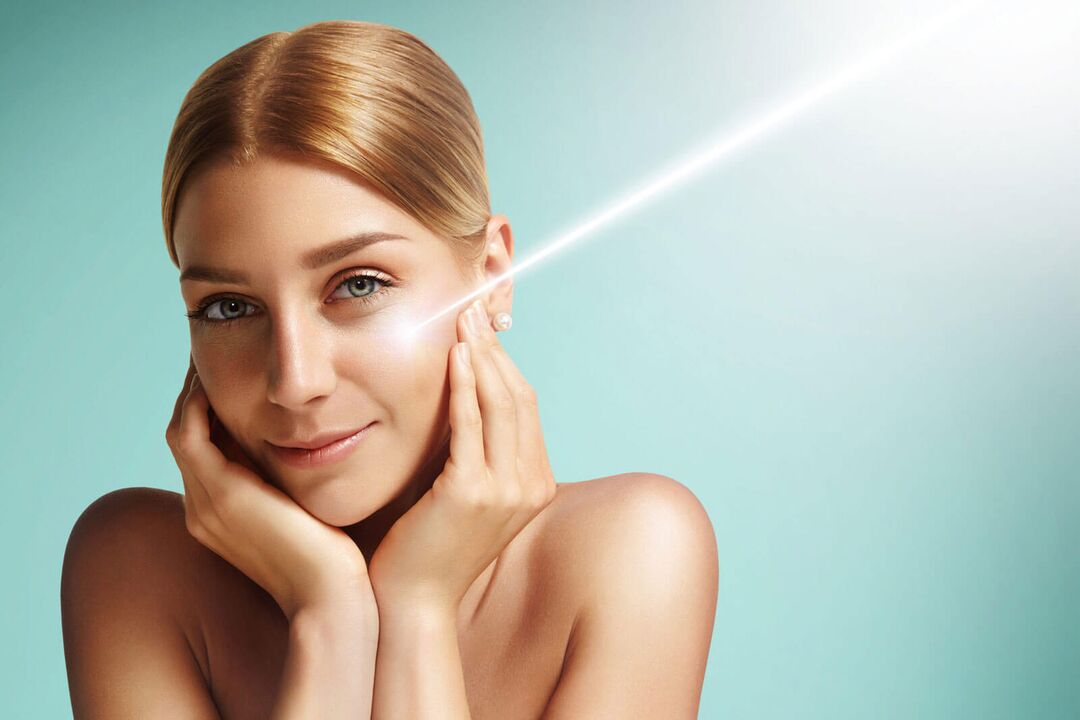
There are different types of laser facial rejuvenation devices and techniques, but they all share a common principle of operation. The principle is based on starting aseptic inflammation with the destruction of old collagen. After the procedure, neocollagenogenesis is started - this is the physiological mechanism for the formation of new collagen.
The result of the laser exposure:
- start of regeneration of skin cells;
- stimulation of collagen, elastin and hyaluronic acid production;
- tightening (lifting effect);
- equalization of color, narrowing of pores, thickening of the skin;
- The skin becomes firm and elastic.
Immediately after the laser rejuvenation procedure, the effect is not visible. The body needs time to recover. But after a few weeks you can see the effectiveness of laser rejuvenation. The quality and condition of the skin improve significantly, the face becomes younger and fresher.
Indications and contraindications
Before doing laser rejuvenation, you need to find out about contraindications and indications for this procedure.
The method is effective for such problems:
- photo and chronoaging of the skin;
- Dull, uneven complexion;
- loss of elasticity;
- vascular pathologies;
- post acne;
- enlarged pores;
- Mimic wrinkles and aging.
When removing wrinkles in the eye area, there are some limitations. The intervention is carried out up to the bony edge of the orbit.
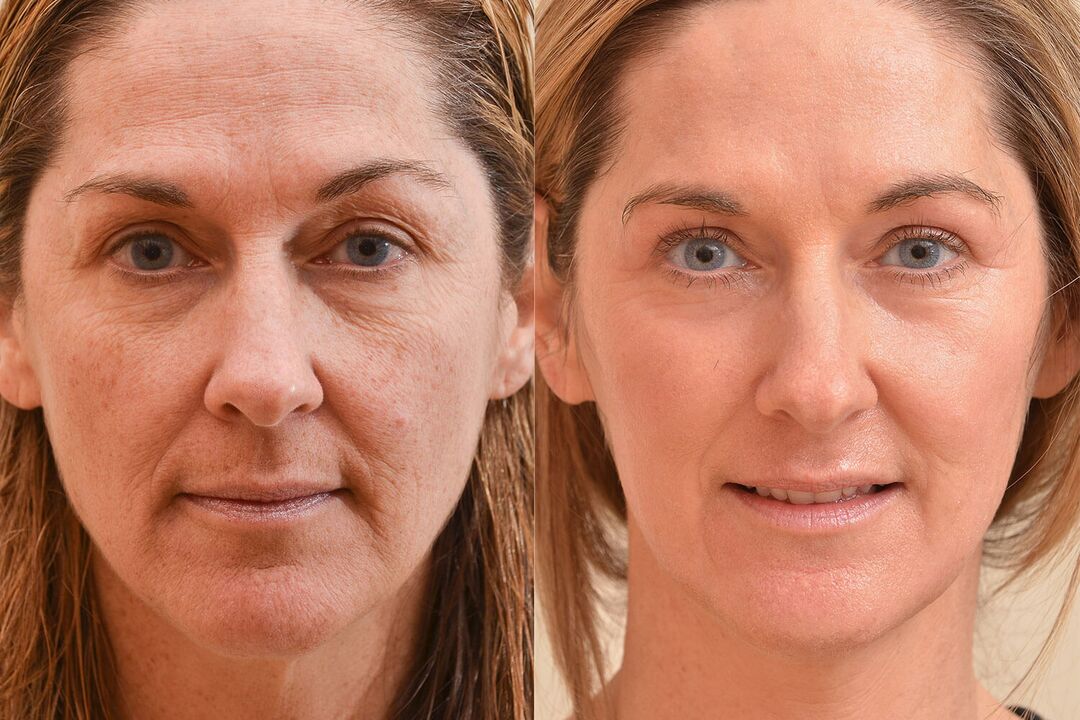
There are contraindications for conducting sessions. But they are very rare, so laser exposure is suitable for most people.
Contraindications:
- tendency to keloid scars;
- The use of photosensitizers;
- herpes rash;
- skin diseases in the acute stage;
- Mental disorders or those registered in a neuropsychiatric pharmacy;
- increased body temperature;
- Violation of the integrity of the skin when projecting the laser;
- blood clotting disorders;
- Diseases of the nervous system, cardiovascular system;
- lactation, pregnancy;
- Malignant tumors.
A person who falls under at least one category should not undergo a laser rejuvenation procedure.
Types of laser therapy
There are different types of laser facial rejuvenation, each of which affects the skin in different ways. The choice for one or the other method is made by the beautician during a consultation after anamnesis and examination.
Laser peeling
One of the most popular and sought-after procedures.
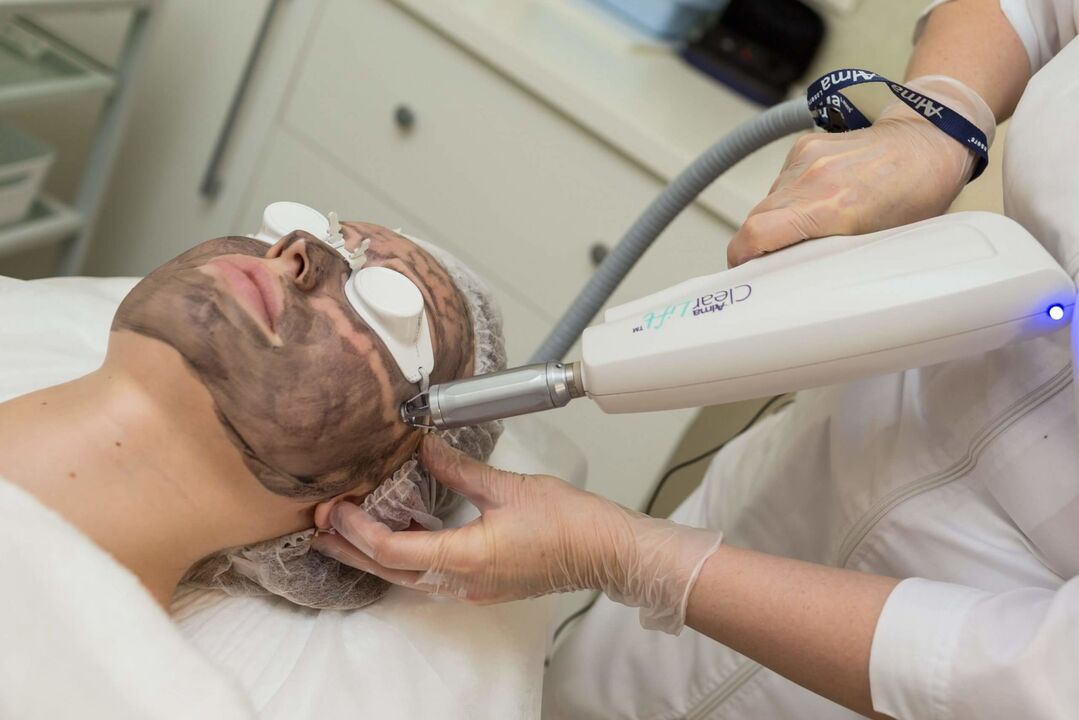
Scrub Types:
- Deep;
- median;
- Surface.
With the help of superficial peeling, dead cells, excess sebum and impurities located on the skin's surface within the epidermis are removed.
The median removes skin cells from the epidermis to the basal layer. It is the golden mean between superficial and deep peeling.
Deep peeling affects the skin layers from the basement membrane to the epidermis. It is performed only in a hospital under anesthesia before the procedure. Has a long rehabilitation period of 4 weeks or more.
One session of laser rejuvenation lasts 30-40 minutes. You have to do it in one course (except for deep peeling). The effect is noticeable after 2-3 sessions. After the end of the procedure, it is necessary to repeat the care effect annually.
grinding
The next type of laser therapy is resurfacing. It uses CO2 and an erbium laser. The laser exposure causes micro damage to the layers of the skin, thereby stimulating the production of collagen and elastin. The regeneration process is accompanied by the appearance of new cells and the synthesis of hyaluronic acid.
The procedure has a lifting effect, increases skin elasticity, tightens pores, evens out color and minimizes post-acne scars. Grinding is the crudest type of taper.
biorevitalization
Laser biorevitalization of the face is a procedure aimed at increasing the concentration of hyaluronic acid in the skin.
The essence of the procedure:
- A preparation containing hyaluronic acid is applied to the skin;
- laser exposure;
- Under the influence of radiation, low-molecular HA fractions penetrate the skin;
- This nourishes and moisturizes the skin, restoring its elasticity.
Laser biorevitalization of the face is painless and effective.
laser lipolysis
Laser lipolysis is a modern and safe procedure for removing excess fat from problem areas using laser irradiation. It makes sense to take a course, one procedure will not be enough. The procedure is non-invasive and the integrity of the skin is preserved.
At the moment today the preferred alternative to liposuction.
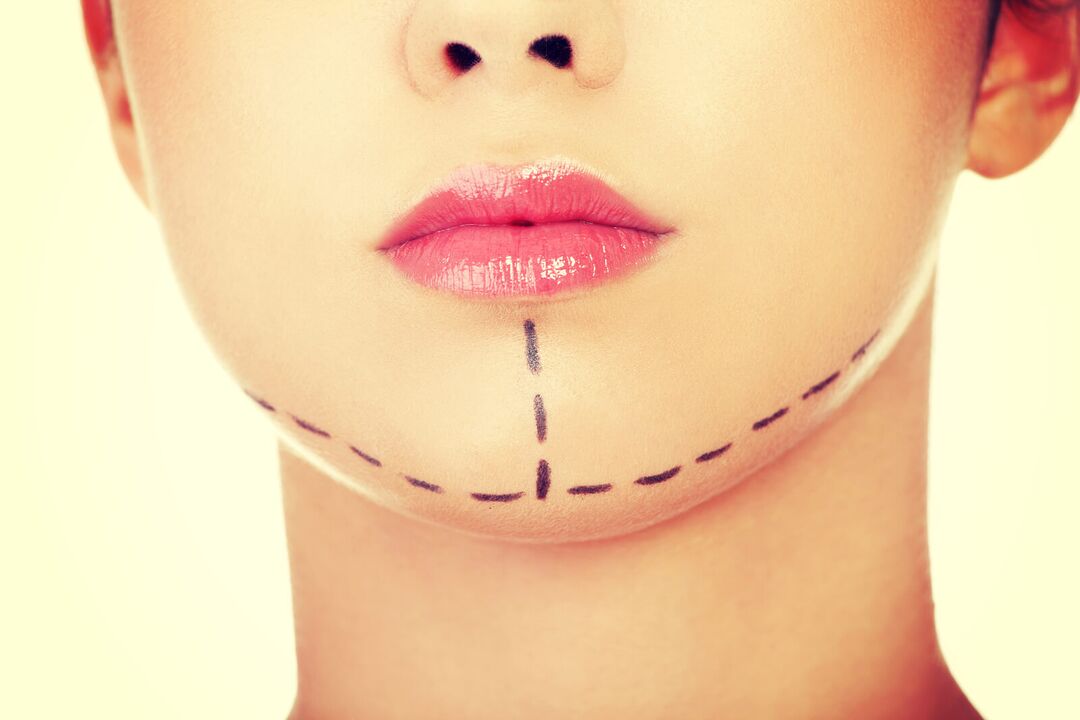
Laser light irradiation destroys fat cells, which are gradually removed from the body naturally.
Will there be complications?
Any cosmetic effect on the skin of the face can harbor certain risks. Complications are predictable (usually they disappear after 3-6 days) and unpredictable (more severe).
Unforeseen Complications:
- Small scars or scars (they appear due to incorrectly selected device parameters or when a person has a tendency to develop keloid scars);
- Hematoma, bleeding with skin damage;
- blisters with bloody or serous fluid (they leave scars);
- worsening of acne;
- The appearance of herpes.
Among the predicted complications:
- erythema (reddening of the skin);
- Swelling;
- Peeling;
- swelling.
This is the body's normal response to skin damage in the area of laser exposure.
The effectiveness of laser rejuvenation
Facial rejuvenation using laser systems has been used since the 1960s. Since then it has been improved to improve efficiency and safety.
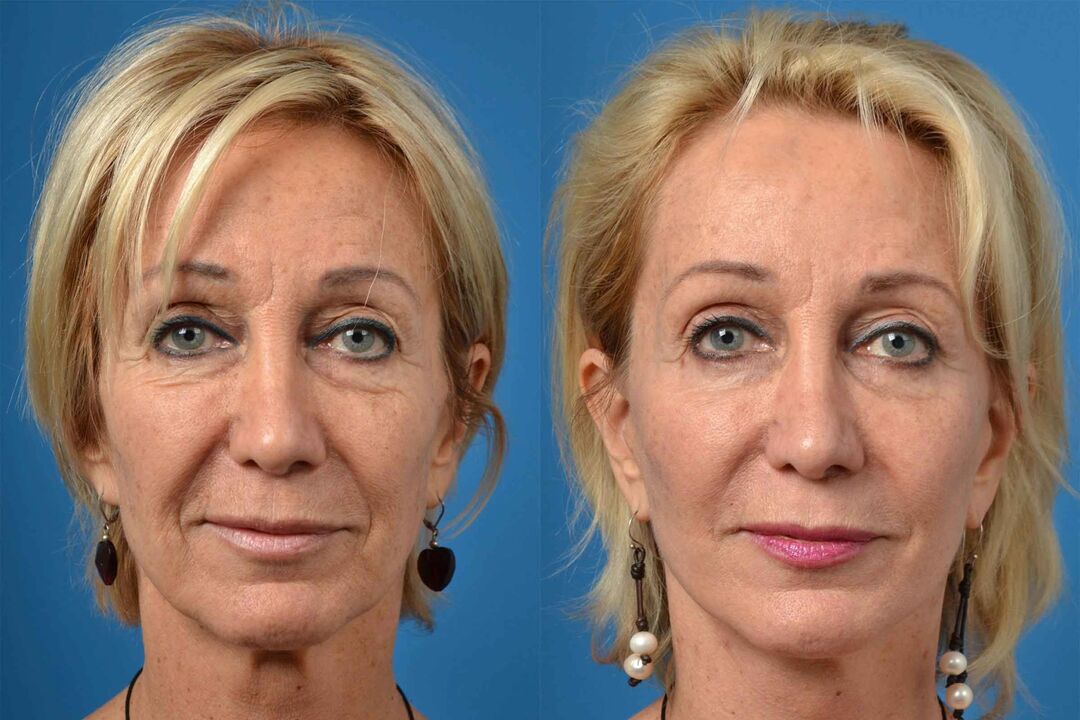
The effect rejuvenates the neck and face or other parts of the body, removes wrinkles, evens out the complexion, gives it freshness, improves the tone and structure of the skin. With the help of exposure to light, the skin becomes thicker and denser.
Laser rejuvenation in menopause
Menopause is a special time in a woman's life. After 40-50 years, the reproductive function gradually decreases, as a result of which the skin's elasticity is lost and wrinkles appear.
Skin care during menopause includes the use of serums, masks, lifting creams and injections. However, combined therapy, laser rejuvenation and injection techniques show significant effectiveness in menopause.
Which procedures to combine the laser for the best effect
Laser therapy is often combined with injections that speed up regeneration (recovery). A week after this, you can do biorevitalization, mesotherapy, plasma therapy or placenta therapy.
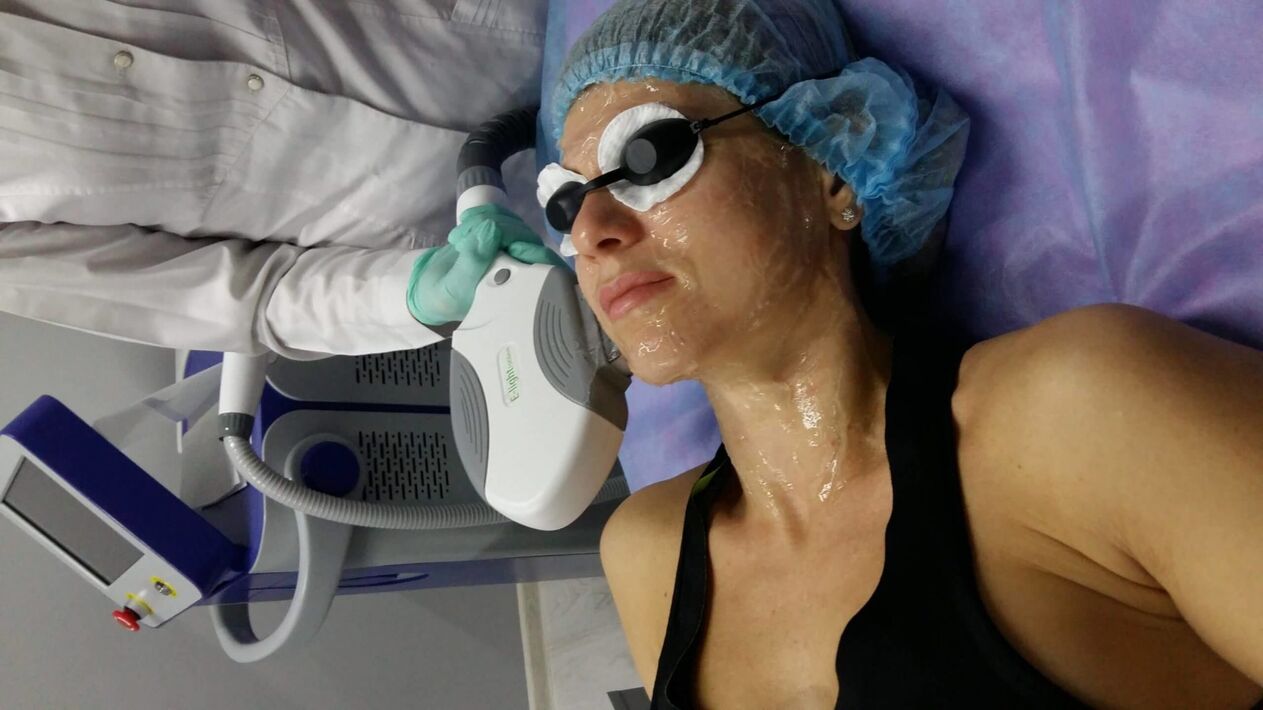
Rejuvenation by the combined method is excellent for preserving and maintaining the result after plastic surgeries. You can effectively get rid of scars even after surgery.
How to choose a good beautician
In order for the procedure to give the desired effect and not harm, you need to choose the right cosmetologist. There are several points to consider:
- The first thing they ask the master is the availability of higher medical education and supporting documentation. The cosmetologist must have a higher medical education, as well as have the necessary documents confirming education in the specialty "cosmetics" and permission (documents of completed education or a certificate) to work with laser devices;
- The next point is work experience. You can find out about reliable recommendations in specialized blogs from friends.
Before you book a procedure, you should go to an initial consultation with a beautician to make sure you are comfortable with that person. Then ask all your questions.
























